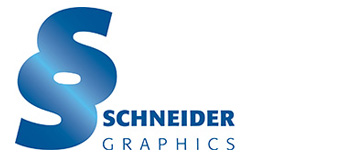Rich Black
When do you want to use Rich Black in your offset printing projects?
Often times using black alone doesn’t quite give you the deep, rich black density that your looking for when you have areas of solid blacks on your project . In those cases we recommend using “Under Color” to create what is commonly referred to as Rich Black. This is achieved by adding screens of cyan, magenta and yellow within 100% black.
It seems like today, everyone has their own opinion as to how much undercolor to use. Using too much or too little of the other colors can shift the tone of the black too. At Schneider Graphics, we have found that 20% cyan, 20% magenta, 20% yellow and 100% black works in nearly all cases for us. The key to getting the best grey scale balance in your rich blacks is to always use even amounts of cyan, magenta and yellow with your solid (100%) black.
With all that said there are those rare occasions when the equal undercolor can’t be used. Like when a photo was taken with a black background and the black background needs to fill a larger area of the sheet. In that situation, you would want to match the color percentages used in the photos background. Doing this would insure that you would not see a different density in the black from where your photo ended and your rich black began when the piece was printed.
If you would like to learn more about rich black or when and how to use it, contact your Schneider Graphics sales rep for more information.
